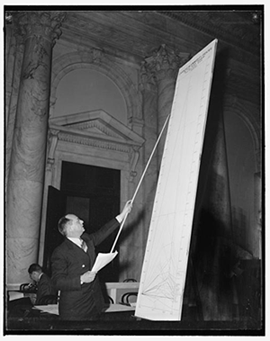Timeline
Below are major milestones in BLS history, grouped by decade. Click on the links within the timeline for more information.
1880s
1890s
- 1891 Investigated the effects of tariff legislation on wages and prices.
- 1898 Published Hand and Machine Labor, providing information on the effect of machinery costs of production, productivity, wages, and employment in selected industries.
1900s
1910s
- 1912 Introduced series on industrial accidents.
- 1913 Began Consumer Price Indexes.
- 1913 Moved to the Department of Labor.
- 1915 Began first monthly studies of employment and payrolls (later called the Current Employment Statistics program).
- 1915 Published first Monthly Review (later called the Monthly Labor Review).
- 1916 Began first labor market information cooperative agreements with states.
1940s
- 1940 Began industry productivity studies program.

- 1942 Established first regional offices.
- 1945 Began providing training for international economists and statisticians.
- 1947 Established Business Research Advisory Council and the Labor Research Advisory Council.
- 1947 Produced first annual measures of output per hour.
- 1947 Released first report on work stoppages.
- 1948 Began publishing collective bargaining settlements.
- 1949 Published first Occupational Outlook Handbook.
1950s
- 1959 Gained responsibility for financing and analyzing the household survey (later called the Current Population Survey) and publishing the results.
- 1959 Published first labor productivity indexes for the total private and private nonfarm business sectors.
1960s
- 1960 Began conducting an annual nationwide survey, (later incorporated into the National Compensation Survey), which became the basis for comparing federal and private-sector pay under legislation passed in 1962 and 1971.
- 1962 Produced first major international comparative study on unemployment.
- 1966 Produced first projections of the labor force, industry output and employment, and occupational employment and job openings.
1970s
1980s
1990s
- 1990 Began using electronic data collection with the computer assisted telephone interview in the Current Employment Statistics survey.
- 1992 Introduced revisions to the Occupational Safety and Health Statistics program, including the first nationwide Census of Fatal Occupational Injuries and new data on worker characteristics and the circumstances of workplace injuries and illnesses.
- 1995 Established website at www.bls.gov.
- 1996 Began collecting occupational wage data, in addition to occupational employment data for every state in the Occupational Employment Statistics program.
2000s
2010s
2020s
- 2020 With the onset of the COVID-19 pandemic, introduced new survey questions looking at the effect of the pandemic on labor market activity, surveyed businesses about pandemic changes to their operations and their sick leave policies, introduced new methods to ensure that productivity data reflected the rapid changes in employment at the start of the pandemic, and collected critical information on employer-reported cases of respiratory virus. Also introduced innovations in data collection methods.
- 2021 Released state data for the first time from the Productivity program and from the Job Openings and Labor Turnover Survey.
- 2022 Expanded monthly labor force data to include American Indians and Alaska Natives, Native Hawaiians and Other Pacific Islanders, and People of Two or More Races.
Last Modified Date: August 4, 2023
 United States Department of Labor
United States Department of Labor
